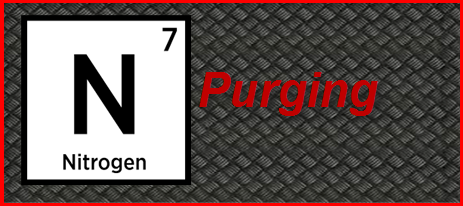Nitrogen purging forms an integral part of safe and efficient functioning of an acetylene gas production plant. This process should be incorporated by all acetylene gas plant owners. This is an internal cleaning process employed to free pipes and other parts of all contaminants. It helps in ridding the system of hazardous elements like oxygen, thus mitigating risk. The entire write-up below elaborates on the best practices to be employed when purging an acetylene production plant with nitrogen.
What is Nitrogen Purging?
Nitrogen purging is the process of cleaning out a system including all pipelines with the help of nitrogen. This process helps free the inner parts walls and parts of a system of oxygen and moisture. During the process, nitrogen is circulated in the system at low or high pressures.
Different Types of Nitrogen Purging Processes
Several types of nitrogen purging processes are employed by acetylene plants. Depending on the type of system you work with, you can choose the corresponding process:
- Pressurization Purging:
- Pressure-Hold-Vacuum Method
- Pressure Transfer of Liquids
- Dilution Purging and Drying
- Displacement Purging (Includes Pigging)
Importance of Nitrogen Purging
The importance of nitrogen purging cannot be overstated. Here are a few reasons why your acetylene production plant needs to be purged with nitrogen regularly:
- Nitrogen purging helps in driving out the oxygen from the internal surfaces of the entire system, including the pipelines. During operation, this process eliminates chances of sparks and helps keep fires at bay.
- Nitrogen also eliminates any presence of moisture. This helps lower the dew point.
- All inert gases are non-flammable. However, nitrogen is much more economical compared to others. Hence, this process is extremely affordable.
- Acetylene is a highly flammable gas. In case of a spark, flashback, or technical or human error, the losses incurred will be very large. In hindsight, this seems like a simple way to avoid heavy losses to life and property. This process ensures a safer environment for the workers and those living close by.
When Should You Purge Your Acetylene Systems?
The following are the events outlining the need to purge acetylene systems:
- As soon as a system is installed
- When changing the system/ parts of the system
- When removing or replacing any pipes
- While conducting regular maintenance
- If any repair work involves heat being applied to the system (as seen in welding processes.)
- When changing the gas supplied to the piping system (Generally, purging is not needed when using a gas manifold system. However, consulting with your equipment manufacturer or service provider will help you determine the correct process to be undertaken.)
- If users will be exposed to the internal parts of the system during maintenance or replacement processes
Precautions to be Taken Before and After Purging Acetylene Systems
In order to ensure a safe environment during the purging process, the following precautions should be taken:
- Before any purging activities are performed, the acetylene production system should be commissioned by Local/ National Government bodies.
- Ensure the system is being used for the purpose it was intended. If not, this should be communicated to the technicians performing the purging activities.
- Ensure that there are provisions in case of an emergency and your employees are well trained to handle such situations.
- All the people involved in the purging activity should be aware of the health risks involved.
- Backflow of acetylene into the purging system should be avoided at all times.
- The nitrogen being pumped into the system should not exceed the maximum pressure stated by the manufacturer in the design guidelines.
- No air should be allowed to enter the system during or after the purging process.
- Tests should be conducted at the onset of the purging process by relevant authorities or qualified personnel. On completion, the relevant organizations should also provide you with official paperwork documenting the purging process.
- The system should be so designed that it allows complete cleaning of the entire system. There should be no scope for any deposits to be made during the purging process.
Helpful Pointers for Effective & Safe Purging of Systems
The following pointers should help you utilize the purging procedure to ensure legal compliance and employment of best practices:
- Ensure that the outlet or termination point is situated away from the inlet. It should be in an area that is away from people to avoid harmful exposure.
- If you are unsure about the relevant codes, rules, and regulations, please consult the NFPA Code 55-2013 for Compressed Gases and Cryogenic Fluids Code.
- Before purging the system, the construction and installation should be checked in detail. The materials used for construction as well as the methods employed for fabrication should be in line with the technical design and other records.
- If a technician is to enter any vessel for purging-related activities, confined space entry rules as defined by OSHA should be followed.
- Ensure that all details of the purging activities are recorded. These records should be made available to the Authority Having Jurisdiction or AHJ. These details should also be made available during all maintenance and repair activities.
Always ensure that the cleanliness and safety levels of the machines are in line with the guidelines provided in the design. It is imperative that a safe working space is provided during purging and general operation of acetylene production plants. Measures for regular and preventive maintenance should be taken at all times. Adoption of best practices during the nitrogen purging process will ensure flawless functioning of an acetylene production plant.




